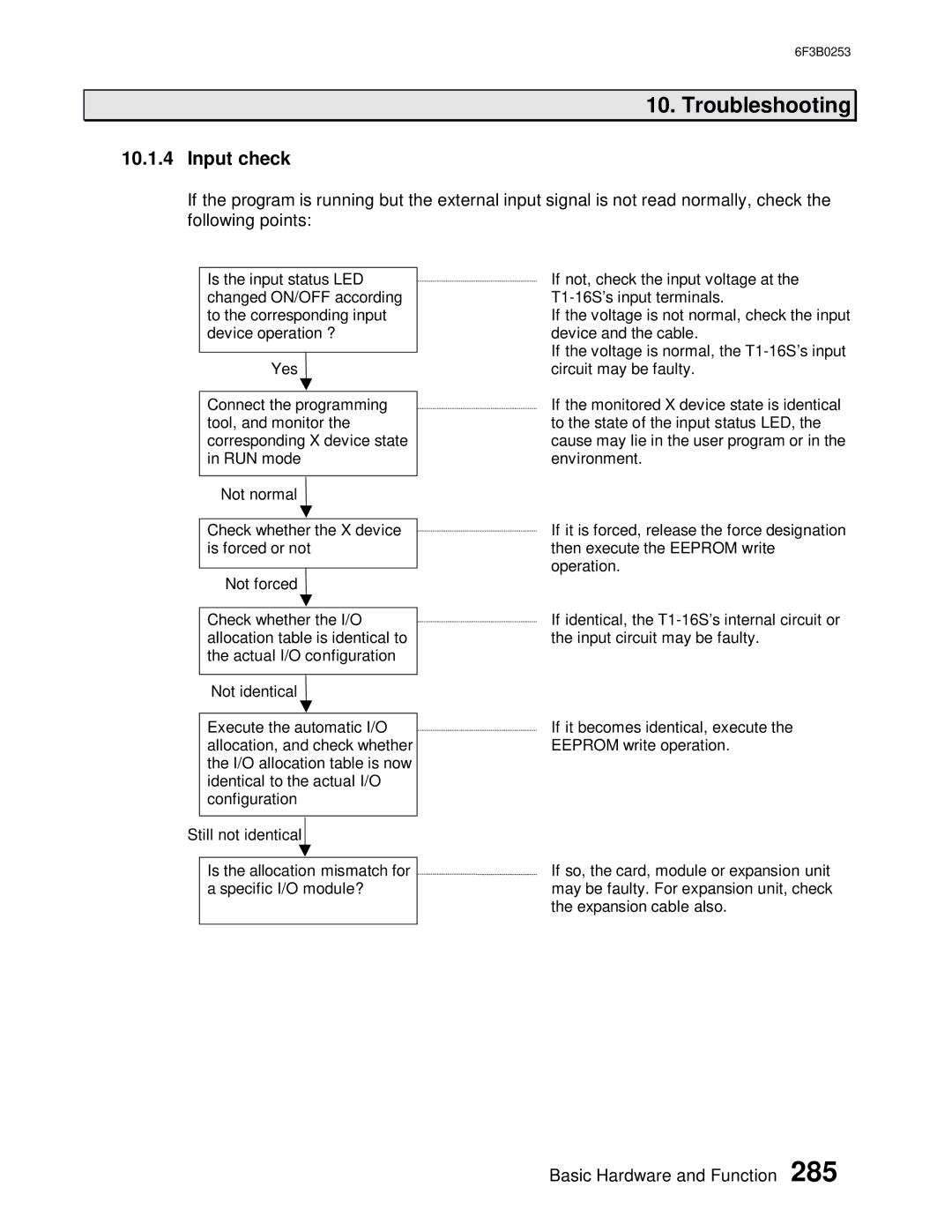
6F3B0253
10. Troubleshooting
10.1.4Input check
If the program is running but the external input signal is not read normally, check the following points:
Is the input status LED changed ON/OFF according to the corresponding input device operation ?
Yes ![]()
Connect the programming tool, and monitor the corresponding X device state in RUN mode
Not normal
Check whether the X device is forced or not
Not forced
Check whether the I/O allocation table is identical to the actual I/O configuration
Not identical
Execute the automatic I/O allocation, and check whether the I/O allocation table is now identical to the actual I/O configuration
If not, check the input voltage at the
If the voltage is not normal, check the input device and the cable.
If the voltage is normal, the
If the monitored X device state is identical to the state of the input status LED, the cause may lie in the user program or in the environment.
If it is forced, release the force designation then execute the EEPROM write operation.
If identical, the
If it becomes identical, execute the EEPROM write operation.
Still not identical
Is the allocation mismatch for a specific I/O module?
If so, the card, module or expansion unit may be faulty. For expansion unit, check the expansion cable also.
Basic Hardware and Function 285
